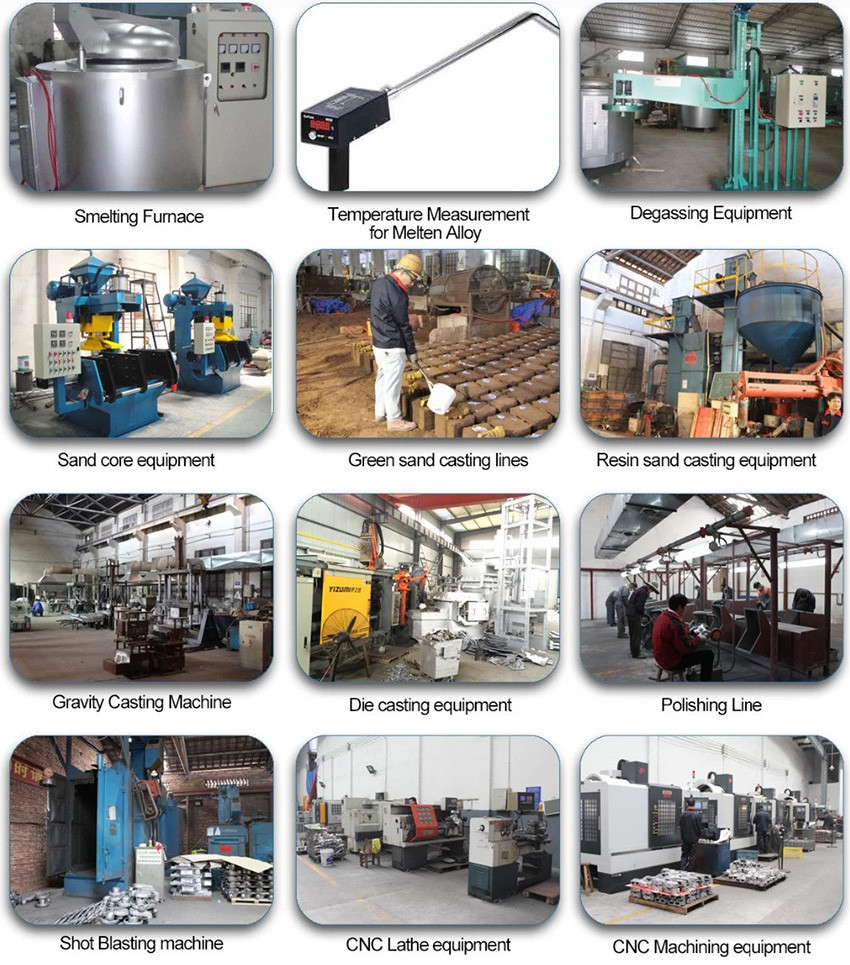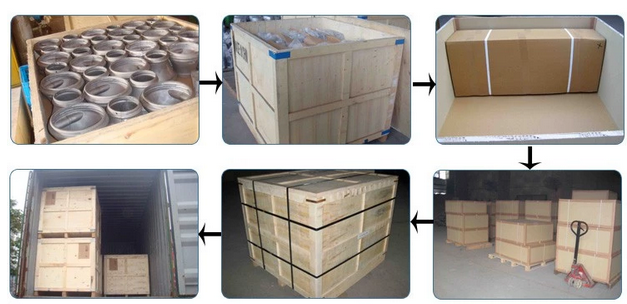Product Description
Exploring Aluminum Casting Techniques for Dead End Clamp and Deadend Production
In the world of industrial manufacturing, Dead End Clamps and Deadends are critical components used in electrical and mechanical systems. These components are essential in securing cables, wires, and other structural elements, ensuring stability and safety in various applications. As an aluminum casting expert, I aim to provide insights into the role of advanced casting techniques, such as aluminum sand casting, aluminum gravity casting, permanent mold casting, and low-pressure die casting, in the production of these vital parts.
The Importance of Aluminum in Dead End Clamp and Deadend Manufacturing
Aluminum is a preferred material for manufacturing Dead End Clamps and Deadends due to its unique combination of properties. It is lightweight, corrosion-resistant, and offers excellent strength-to-weight ratios, making it ideal for outdoor applications where exposure to harsh environmental conditions is common. Additionally, aluminum's versatility allows it to be shaped into intricate designs through various casting methods.
The choice of casting technique significantly impacts the quality and performance of these components. Let us delve into the most commonly used aluminum casting methods and their suitability for producing Dead End Clamps and Deadends.
Aluminum Sand Casting for Dead End Clamps and Deadends
Aluminum sand casting is one of the oldest and most versatile casting techniques. It involves creating a mold from sand, into which molten aluminum is poured. This method is particularly advantageous for producing complex geometries and low-volume production runs.
For Dead End Clamps and Deadends, aluminum sand casting offers several benefits:
1. Cost-Effectiveness: Sand molds are inexpensive to produce, making this method ideal for prototypes or custom designs.
2. Design Flexibility: Sand casting allows for intricate shapes, which is crucial for components like Deadends that require specific grooves or contours to grip wires securely.
3. Wide Material Compatibility: It can accommodate various aluminum alloys, enabling manufacturers to tailor the material properties to specific application requirements.
However, sand casting may not be suitable for high-volume production due to its slower cycle times and the need for manual labor in mold preparation.
Aluminum Gravity Casting: Precision and Strength
Aluminum gravity casting, also known as permanent mold casting, involves pouring molten aluminum into a reusable steel or iron mold under the force of gravity. This process is highly effective for producing medium to high-volume runs of Dead End Clamps and Deadends with consistent quality.
Advantages of aluminum gravity casting include:
1. Enhanced Surface Finish: The use of permanent molds results in smoother surfaces, reducing the need for post-casting machining.
2. Improved Mechanical Properties: Gravity casting produces denser castings with fewer porosities, ensuring higher strength and durability.
3. Dimensional Accuracy: This method offers better dimensional control compared to sand casting, which is critical for ensuring a precise fit in applications.
Gravity casting is particularly suited for Dead End Clamps that require robust mechanical properties to withstand heavy loads in tensioning systems.
Permanent Mold Casting for Long-Lasting Durability
Permanent mold casting is closely related to gravity casting but often incorporates additional features such as cores or inserts to create more complex geometries. This method is ideal for producing high-strength components like Deadends that must endure continuous stress over extended periods.
Key benefits of permanent mold casting include:
1. High Repeatability: Reusable molds ensure consistent quality across multiple production cycles.
2. Reduced Defects: Permanent molds minimize gas entrapment and shrinkage defects, leading to superior product reliability.
3. Cost Efficiency in High Volumes: While the initial cost of mold creation is higher, permanent mold casting becomes economically viable for large production runs.
Deadends manufactured using permanent mold casting exhibit excellent fatigue resistance, making them suitable for demanding environments such as power transmission lines.
Low-Pressure Die Casting: Precision Meets Efficiency
For applications requiring intricate designs and high production efficiency, **low-pressure die casting** (LPDC) is a preferred choice. This method involves injecting molten aluminum into a mold under controlled low pressure, resulting in high-quality castings with minimal defects.
The advantages of low-pressure die casting for Dead End Clamps and Deadends include:
1. Superior Metallurgical Quality: The controlled pressure reduces turbulence during filling, minimizing porosity and enhancing structural integrity.
2. Complex Geometries: LPDC enables the creation of detailed designs with thin walls and tight tolerances.
3. Automation-Friendly: This process is well-suited for automation, ensuring consistent quality and faster production cycles.
Low-pressure die casting is particularly beneficial for manufacturing lightweight yet strong Dead End Clamps used in aerial cable installations, where both performance and efficiency are critical.
Choosing the Right Casting Method
Selecting the appropriate aluminum casting technique for Dead End Clamps and Deadends depends on several factors:
1. Production Volume: For low-volume production or prototypes, aluminum sand casting is cost-effective. For medium to high volumes, aluminum gravity casting or permanent mold casting may be more suitable.
2. Design Complexity: Components with intricate details may benefit from low-pressure die casting or sand casting.
3. Mechanical Requirements: Applications requiring enhanced strength and durability should consider gravity or permanent mold casting.
4. Budget Constraints: While permanent mold and low-pressure die casting offer superior quality, they involve higher initial costs compared to sand casting.
The manufacturing of Dead End Clamps and Deadends relies heavily on advanced aluminum casting techniques to achieve optimal performance and durability. Whether through aluminum sand casting, aluminum gravity casting, permanent mold casting, or low-pressure die casting, each method offers unique advantages tailored to specific production needs.
As industries continue to demand lightweight, corrosion-resistant components with exceptional mechanical properties, the role of aluminum casting will only grow in importance. By selecting the right technique and leveraging aluminum's versatility, manufacturers can ensure that Dead End Clamps and Deadends meet the rigorous standards required for modern applications.
For businesses seeking reliable solutions in aluminum casting, partnering with experienced foundries that specialize in these techniques will be key to achieving success in this competitive market.
Factory Cabability
| Material | 1. Sand casting&Gravity casting&Low pressure die casting: |
| Service | Sand casting, Gravity casting, high pressure die casting,low pressure die casting and CNC Machining casting. |
Equipment of Casting | 1. High pressure die casting machining:125T/180T/250T/280T/500T/800T/1250T 2. Gravity casting machine: 7 production lines 3. Low pressure die casting machining: 1 production line 4. Sand casting machine: 6 production lines 5. Degassing equipment and opportunities to refine the material 6. Machining: 9 Sets CNC Machines; 5 sets Milling machines; 3 setsTurning machines; 20 sets drill and tap machines |
| Testing Facility | Spectrometer, Tensile test device, Hardness test device, CMM, X-Ray, Leaking test device |
Precision Machining | CNC turning, Milling, Drilling, Grinding, Cutting, Reaming and Threading |
| Finished | Polishing, Sand blasting, Heat treatment, Painting, Powder coating, Anodizing, Electroplating, Chrome plating, Mirror polishing. |
| Products | All kinds of Cast aluminum productions: Including Vehicle industry,Medical device industry, Marine industry, Lighting industry,Oil&Gas Transporttation industry, Electric Utility & Communication Industries, Architectural industry and Furniture industry so on |
Production Images
 |  |  |
Company Equipment
From Casting to Machining, One-stop Solutions for your designs

Packing & Shipping
Casting parts are very heavy, package must be strong. Our package material is wooden crate which is Fumigation free.
And we can pack productions as customers' requirements

Why Choose Us
❖ More than 25 years in castings and machining process; so we have much experience for your projects.
❖ Passed ISO9001 : 2015 & TS16949 : 2009
❖ Have four casting types in our factory; you can find the four process in one factory, save cost for your company
❖ From Casting to Finished surface, Owned casting, polishing and plating workshops, one-stop, We can offer Good quality and strict delivery time.
❖ With samples and order: We can offer dimension report, Chemical composition and Mechanical properties
❖ Control material with spectral and thermal analysis equipment (density and processing)
❖ Spectral analysis of raw material and liquid melt, batch before casting.
❖ Transportation Advantage:
A) Near Sea Port and Air Port-Ningbo Sea Port and Yiwu Airport or Hangzhou Airport;
B ) From Shanghai to our factory by Fast train directly, takes two and half hours; From Hangzhou to our factory, only takes one hour
FAQ
Q1. Are you trading company or manufacturer
We are factory, We are only doing cast aluminum and machining more than 20years, we have much experience in this industry. If you find some "factory" can do kinds of material castings(steel, iron,stainless,cooper.......), we are sure they are trading company. If you have other material castings to do, we can introduce for you free. It is our pleasure that we can help you.
Q2. How to get quotation from your factory?
We need a 3D CAD solid model to prepare a First Quote interactive quote. All of the Firstcut processes are dependent on good 3D CAD solid models. Two-dimensional (2D) drawings are not adequate for quoting or making parts.
We can accept native SolidWorks (.sldprt) or ProE (.prt) files as well as solid 3D CAD models from other CAD systems output in IGES (.igs), STEP (.stp), ACIS (.sat) or Parasolid (.x_t or .x_b) format.
Q3. When can I get the price?
We usually quote within 48 hours after we get your inquiry. If you are very urgent, please call us or tell us in your email so that we will regard your inquiry priority.
Q4. How about your lead time?
1): Toolings &Samples
Sand Casting will take 15 to 30 days after receiving your advance payment.
Gravity casting, low pressure die casting, high pressure die casting will take 30 to 60days after receiving your advance payment.
2) Mass production
The specific delivery time depends on the items and the quantity of your order.
Q5. Can you produce according to the samples?
Yes, we can produce by your samples or technical drawings. We can build drawings for you after we get your samples too.
Q6. What is your sample policy?
We can supply 1pcs sample free (value under USD15/PCS) after we finish as your drawings, but the customers have to pay the freight cost. If you need more samples, you have to pay the samples cost.
Q7. Can we use your current tooling? Or can we get samples which are shown on your website?
No, we can't do it.
We only accept OEM orders and do casting parts as your drawings or samples. We can't sell any production or design to any third body. We can't show any photos on website without our clients' allowance. We signed NDA with all clients, all tooling and drawings belong our clients. We only use the tooling to make productions for one client. The client can take way the tooling any time after tooling cost.
Q8. Do you test all your goods before delivery?
Yes, we have 100% test before delivery
Q9: How do you make our business long-term and good relationship?
We keep good quality and competitive price to ensure our customers benefit ;
We respect every customer as our friend and we sincerely do business and make friends with them, no matter where they come from.